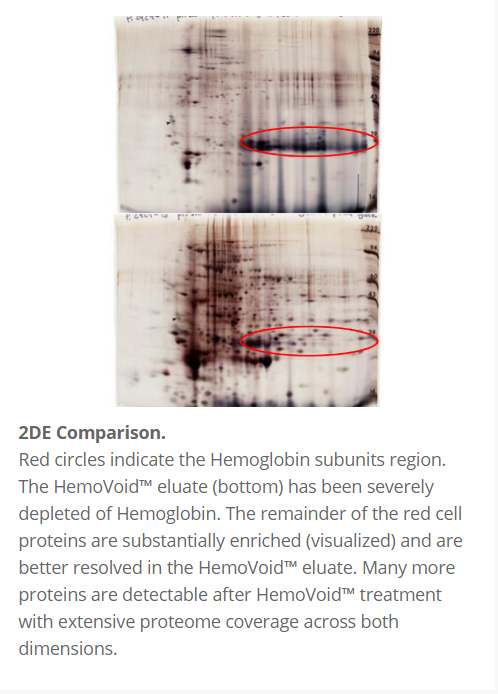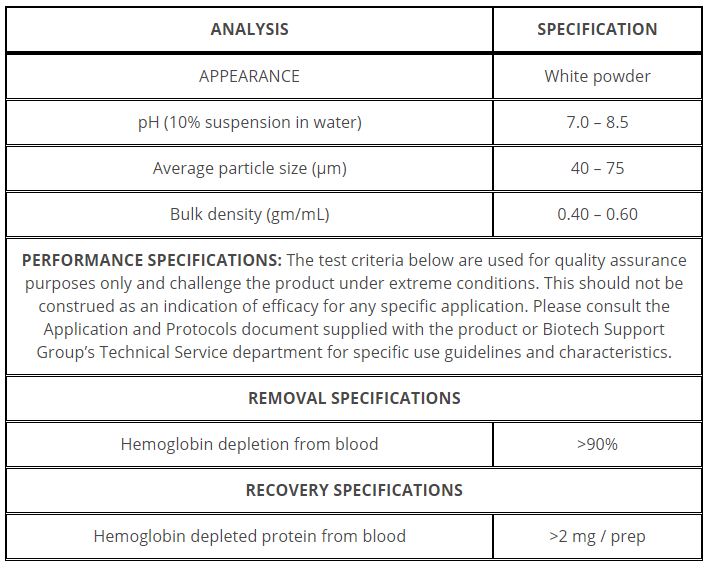Product
제품
-
Analytical Products
- Wyatt Technology
- Awareness Technology
- Eurofins l Abraxis (GSD)
- Aurora Biomed
- Canada NRC-CNRC
- Chrom Tech
- Eichrom Technologies
- EPROGEN
- Fluidic Analytics
- Globe Scientific
- GENERON
- Halo Labs
- Hygiena International
- KROMATON
- InProcess-LSP
- MTC Bio
- MZ-Analysentechnik
- Newomics Inc.
- Occhio Instruments
- Optimize Technologies
- Pickering Laboratories
- PolyLC
- Raykol Group
- RheoSense
- Rocker Scientific
- Santai Science
- SEDERE
- Spectra Analysis
- UCT
- Wealtec Corp
-
Bio & Medical Products
- Biolog
- Adooq Bioscience
- A&A Biotechnology
- Accegen Biotechnology
- Anatrace
- Array Bridge
- Biogenes GmbH
- BioQuochem
- BioServ UK
- Biomiga
- Biotech Support Group
- CinderBio
- Cell Technology
- Creative Biolabs
- Creative Diagnostics
- Creative Biostructure
- Creative Biomart
- Creative Enzymes
- EICOM
- Emulseo
- GLYcoDiag
- Helix Biotech
- InnoGenomics
- IsoSciences, LLC
- IUL Instruments
- Micropore Technologies
- Matrix Innovation
- PreciGenome
- PhylumTech
- ProFoldin
- Protein Ark
- Primer Design
- ProteoChem
- RareCyte
- RECIPE
- Silicycle Inc.
- Tymora Analytical
- UTAK
- YouSeq
- Z Biotech
- HemoVoid™
- 제품명: HemoVoid™
- 용도: Hemoglobin Removal Kits
- 메이커: Biotech Support Group
- 카달로그:
소개
HemoVoid™ Hemoglobin Depletion From Erythrocytes
• Hemoglobin voids in flow-through >98%, with <30 minute bind/wash/elute protocol
• Hemoglobin removal from red cell lysates for RBC proteomics
• Hemoglobin removal from hemolyzed serum, blood and dried blood
spot/blood card
• Enrichment of hemoglobin variants.
• Low abundance protein and enzyme enrichment
• Disposable, cost-effective and high-throughput
• Mild elution maintains tertiary structure and simple transfer to secondary
analysis
• Removes hemoglobin from species including human, sheep, bovine, goat, etc.
• Removes hemoglobin from organs, tissues.
• The eluted fractions retain their enzymatic and biological activity
• The eluted fraction is compatible with LC-MS, activity based protein profiling
and proteomic studies.
HemoVoid™ , a silica-based protein enrichment matrix, removes hemoglobin from erythrocyte lysate samples while concentrating low abundance, and/or low molecular weight proteins.
The HemoVoid™ protocol uses mild buffers; the protocol conditions are so gentle that native enzyme activity is retained in elution fractions.
HemoVoid™ derives from a silica-based library of individual mixed-mode ligand combinations (ionic, hydrophobic, aromatic, polymer). The library was designed to facilitate weak binding of proteins, allowing for rapid elution from the matrix without any foreknowledge of the variety of proteins contained in the starting sample. HemoVoid™ depletes hemoglobin from red cell lysates while improving the resolution of less abundant blood proteins.
☞
사양

주문정보


관련자료
|
References
Rosin-Arbesfeld, Rina, and Ronen SIMAN-TOV. "Article of manufacture and methods for increasing survival of red blood cells." U.S. Patent Application No. 15/739,857.
Puente-Marin, Sara, Iván Nombela, Sergio Ciordia, María Carmen Mena, Verónica Chico, Julio Coll, and María del Mar Ortega-Villaizan. "In Silico Functional Networks Identified in Fish Nucleated Red Blood Cells by Means of Transcriptomic and Proteomic Profiling." Genes 9, no. 4 (2018): 202.
Red Blood Cells (RBC) Nombela I, Puente-Marin S, Chico V et al. Identification of diverse defense mechanisms in trout red blood cells in response to VHSV halted viral replication [version 1; referees: awaiting peer review]. F1000Research 2017, 6:1958 (doi: 10.12688/f1000research.12985.1) Cortese-Krott, Miriam M., et al. "Identification of a soluble guanylate cyclase in RBCs: preserved activity in patients with coronary artery disease." Redox Biology (2017).
Carvalho, Ana Sofia, Manuel S. Rodriguez, and Rune Matthiesen. "Red Blood Cells in Clinical Proteomics." Serum/Plasma Proteomics: Methods and Protocols (2017): 173-181. Human Red Blood Cells (RBC) Nemkov, Travis, Kaiqi Sun, Julie A. Reisz, Anren Song, Tatsuro Yoshida, Andrew Dunham, Matthew J. Wither et al. "Hypoxia modulates the purine salvage pathway and decreases red blood cell and supernatant levels of hypoxanthine during refrigerated storage." haematologica 103, no. 2 (2018): 361-372. Feliciano, Amélia, Fátima Vaz, Cristina Valentim-Coelho, Vukosava M. Torres, Rita Silva, Vesna Prosinecki, Bruno M. Alexandre et al. "Evening and morning alterations in Obstructive Sleep Apnea red blood cell proteome." Data in Brief (2017).
HemoVoid™ On Bead Digestion Application Work On RBC by Irene Granlund, Umeå University Red Blood Cells, Plasmodium extracts Machado, Patrícia Isabel Pires. Pyruvate kinase and glucose-6-phosphate dehydrogenase deficiencies and their association with malaria–population genetics and proteomic studies. Diss. Universidade do Porto, 2013. Walpurgis, Katja, et al. " Effects of gamma irradiation and 15 days of subsequent ex vivo storage on the cytosolic red blood cell proteome analyzed by 2D DIGE and Orbitrap MS." PROTEOMICS-Clinical Applications (2013).
P. Falciparum Clone 3D7 Cultured In Human Erythrocytes
Lasonder E, Green JL, Camarda G, Talabani H, Holder AA, Langsley G, Alano P. The Plasmodium falciparum schizont phospho-proteome reveals extensive phosphatidylinositol and cAMP-Protein Kinase A signalling. J Proteome Research. 2012;
Barasa, Benjamin, and Monique Slijper. "Challenges for red blood cell biomarker discovery through proteomics." Biochimica et Biophysica Acta (BBA)-Proteins and Proteomics 1844.5 (2014): 1003-1010. Lange, Philipp F., Pitter F. Huesgen, Karen Nguyen, and Christopher M. Overall. "Annotating N termini for the Human Proteome Project: N termini and Nα-acetylation status differentiate stable cleaved protein species from degradation remnants in the human erythrocyte proteome." Journal of proteome research (2014). Katja Walpurgis, Maxie Kohler, Andreas Thomas et al.Validated hemoglobin-depletion approach for red blood cell lysate proteome analysis by means of 2D-PAGE and Orbitrap MS.Electrophoresis.2012; Mizukawa, B., George, A., Pushkaran, S. et al. Cooperating G6PD mutations associated with severe neonatal hyperbilirubinemia and cholestasis.Pediatric Blood Cancer.2011;56: 840-842. Sudha Neelam, David G Kakhniashvili, Stephan Wilkens et al. Functional 20S proteasomes in mature human red blood cells Experimental Biology and Medicine.2011;236:580-591
|
